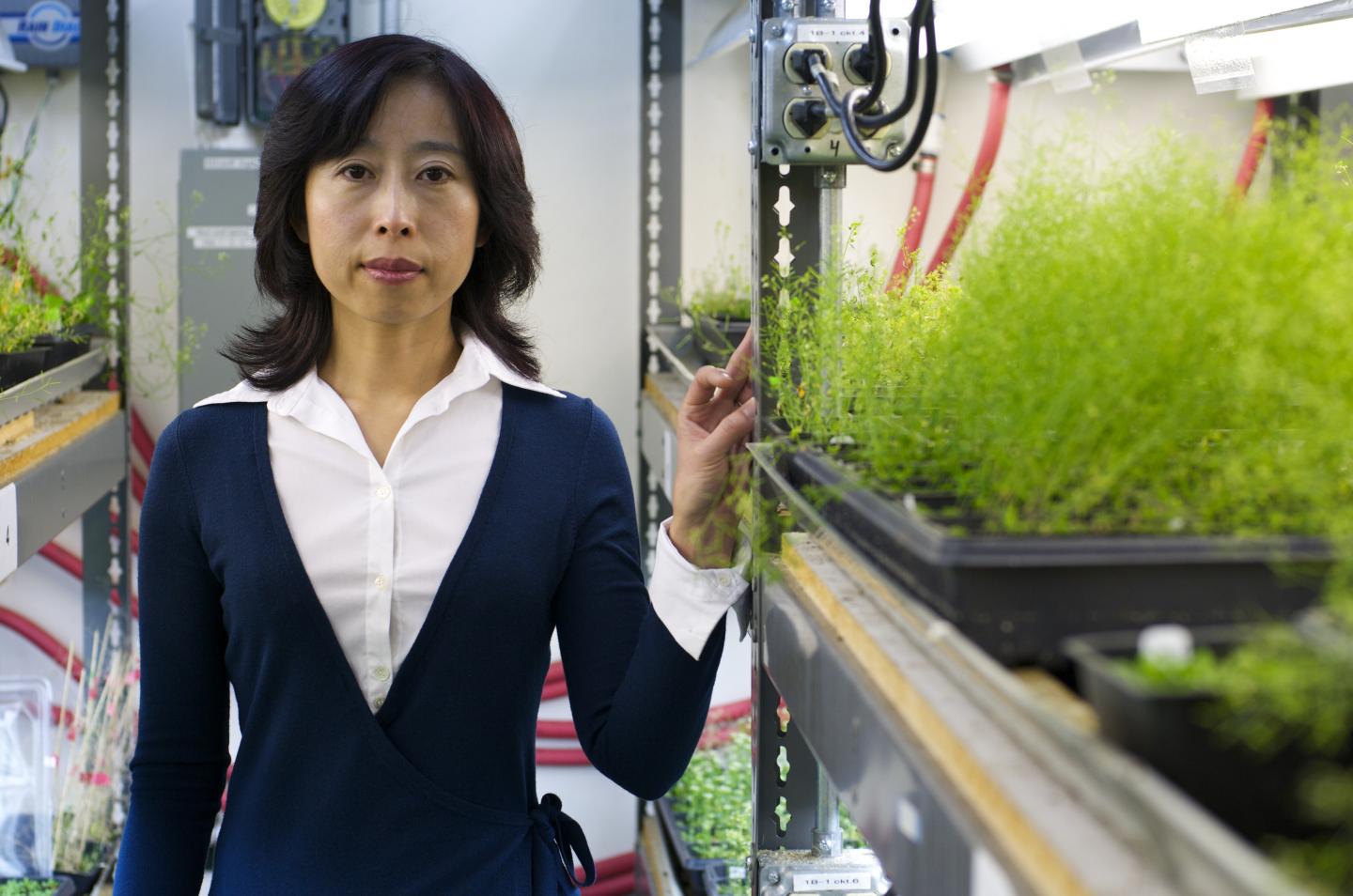
Credit: L. Duka.
RIVERSIDE, Calif. – A team of researchers, led by a plant cell biologist at the University of California, Riverside, has for the first time identified a small RNA species and its target gene that together regulate female germline formation in plants.
"Understanding the mechanisms governing germline formation is crucial to our ability to manipulate plant reproduction for the improvement of agriculture," said Xuemei Chen, a distinguished professor of plant cell and molecular biology, who led the research project.
In both plants and animals, the germline is the lineage of cells that eventually makes the gametes (eggs and sperms). In animals, the germline is set aside (or "specified") early on, during embryogenesis, and does not go on to give rise to "somatic cells" – cells in the body that are not reproductive cells. In plants, on the other hand, the germline is not specified early on. It is produced from somatic cells late in plant development – specifically, in flowers – and is the first step towards sexual reproduction.
The new work not only identifies a regulatory module for an important developmental process, it also implies that there is likely cell-to-cell communications via RNA or protein in this process.
Study results appear June 5 in Current Biology.
Chen explained that small RNAs have been implicated in the process of germline formation in plants, but until now the small RNA species involved, called "tasiR-ARFs," was unknown. Chen and her team found that the tasiR-ARFs regulate germline formation by repressing its target gene Auxin Response Factor 3 (ARF3).
Chen explained that in mutants that fail to produce certain types of small RNAs, more somatic cells become germ cells, suggesting that small RNAs prevent the overproduction of germ cells. By isolating more mutants with germline specification defects, the team found that the mutants provided more clues that, eventually, helped the team identify tasiR-ARFs.
The research was done on Arabidopsis, a model plant used widely in plant biology labs. The findings, however, are most likely to be applicable to other plants because tasiR-ARF is highly conserved.
Chen and her team did not see a defect in male germline in the mutants they studied, but, based on the literature in the field, acknowledge that small RNAs do act in the male germline.
"Quite possibly, in the case of the male germline, a different small RNA species is involved," Chen said.
###
Chen, a Howard Hughes Medical Institute – Gordon and Betty Moore Foundation Investigator and a member of the National Academy of Sciences, was joined in the research by Zhenxia Su (first author of the research paper), Yuanyuan Zhao, Shaofang Li, and So Youn Won at UC Riverside; as well as scientists at Fujian Agriculture and Forestry University, China.
Chen was funded by grants from the National Institutes of Health, the National Natural Science Foundation of China, and the Guangdong Innovation Research Team Fund for this project.
The University of California, Riverside is a doctoral research university, a living laboratory for groundbreaking exploration of issues critical to Inland Southern California, the state and communities around the world. Reflecting California's diverse culture, UCR's enrollment is now nearly 23,000 students. The campus opened a medical school in 2013 and has reached the heart of the Coachella Valley by way of the UCR Palm Desert Center. The campus has an annual statewide economic impact of more than $1 billion.
Media Contact
Iqbal Pittalwala
[email protected]
951-827-6050
@UCRiverside
http://www.ucr.edu
############
Story Source: Materials provided by Scienmag





